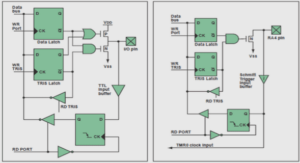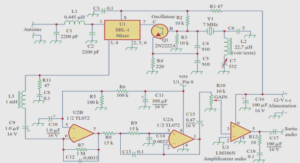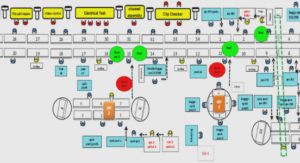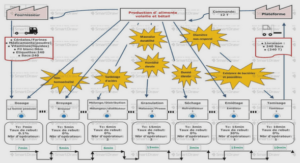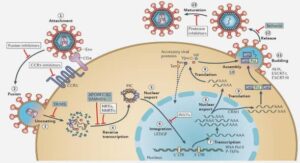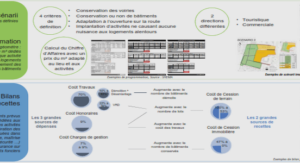Hydrogen Storage in Metal hydrides
Metal hydrides have been studied for several applications such as for gas separation and purification, temperature sensing, thermal compression, and refrigeration. However, the main application for metal hydrides is hydrogen storage [7-9]. Depending upon the bonding between hydrogen and metal atom, hydrides are classified as ionic hydride, covalent hydride and metallic hydrides [10]. Most of the hydrides studied for hydrogen storage are metallic hydrides [11]. In metallic hydrides, hydrogen atoms interact with metal atoms and make a metallic bond.
Thermodynamics of Metal Hydrides or Pressure composition Temperature (PCT)
When a metal is in contact with hydrogen, the hydrogen molecule firstly interacts with the surface through weak Van-der Walls interaction which is known as the physisorption phenomenon. In the case of metal hydride formation, hydrogen overcomes the activation barrier and molecular hydrogen dissociate into hydrogen atoms. After this dissociation, the hydrogen atom diffuses into the bulk and makes M-H (metal hydrogen) solid solution which is known as the α phase .
Hydrogen Storage in body centred solid solution alloys
A solid solution alloy is formed by dissolving the one or more solute elements into a solvent element [12]. For solid solution formation, it is not necessary to have a stoichiometric or near stoichiometric alloy composition.
For hydrogen storage applications, various compositional solid solution alloys such as Pd, Ti and Zr based alloys have been studied [13-17]. In 1982, Ono et.al reported the hydrogen absorption properties of Ti-V solid solution alloy [18]. They measured the pressure composition temperature (PCT) curve of TioA VO. 6 alloy and observed that this alloy took a very long time to attain the equilibrium pressure [19]. This measurement emphasized on the slow reaction rate ofthis alloy. Therefore, due to their slow reaction rate, Ti-V -based alloy was not found suitable for practical application. In 1988, Libowitz and Maeland investigated the effect of the addition of transition elements (Fe, Mn, Cr, Co, Ni) in Ti-V -based alloy and observed that addition of a third element improves the hydrogenation kinetics [20, 21].
Hydrogenation characteristics of bec alloy
As the plateau of the monohydride phase is usually at a pressure mu ch lower than one bar, this makes it impossible to desorb in most practical applications. The dihydride plateau is at mu ch higher pressure and this phase could be desorbed under a few bars of hydrogen pressure. Reversible capacity is defined by the capacity that could be absorbed and desorbed under the operational conditions of the hydride tank. Therefore, two plateaus in PCT are undesirable.
Besides two plateaus in PCT, difficulty in first hydrogenation (activation) is also an important problem with these alloys. Generally, the surface of the alloy is covered by an oxide layer. During the activation, hydrogen has to break the oxide layer to be absorbed in the bulk of the alloy [23]. To solve the activation problem, heat treatment between 300 and 750 Oc is usually required for bcc alloys which is not desirable for practical applications [24, 25].
For utilization ofbcc alloys for hydrogen storage, the destabilization of the monohydride (in order to improve the reversible capacity) and making the activation possible at room temperature are two important aspects that have to be improved.
Laves phase related bec solid solution
In 1995 Tsukahara et al. studied the V -based multi-phase alloys to make the electrodes for Ni-metal hydride batteries and observed different phases for the different alloy composition [26-29]. For TiV3Nio.56Hfx, (x = 0.046, 0.24) alloy they observed the presence ofbcc phase with CI4 laves phase [28]. They. found that the combined effect of bcc and C14 laves phases was helpful to obtain higher electrode capacity.
Iba and Akiba in 1997 reported that alloys having a bcc solid solution phase along with Laves phases are very promising for hydrogen storage and they named these kind of bcc phase ‘Laves phase related bcc solid solution’ to distinguish them from simple bcc phase that is observed in Ti-V system [19]. In their study, they found that Ti-V-Cr alloys have smaller hysteresis th an Ti-V -Mn alloys which makes them more suitable for the practical application [19].
It was reported that Ti-V-Cr alloys absorb up to 3.7 wt.% of hydrogen, but their reversible capacity is around 2.4 wt.% [18, 30, 31]. In order to see the effect of additional phase on sorption kinetics of bcc alloy, Miraglia et al. remelted Ti-V -Cr bcc alloy with 4 wt.% of Zr7NilO [23]. They reported that due to the addition of Zr7NilO, a secondary phase was formed which made the activation possible without prior heat treatment.
Activation kinetics and storage capacity are also affected by the differences in chemical composition. Many groups have studied the effect of different elementary composition on the hydrogenation characteristics of bcc alloys and reported that variation in chemical composition has a direct effect on the plateau pressure and sorption kinetics [19, 31-33]. Yu et al. studied the effect of V-content in Ti-V-Cr-Mn alloy [34]. They found that a higher proportion of vanadium increased the hydrogen capacity, but this made the first hydrogenation much slower.
Chapter.l Introduction of Hydrogen Economy and Hydrogen storage Materials |

